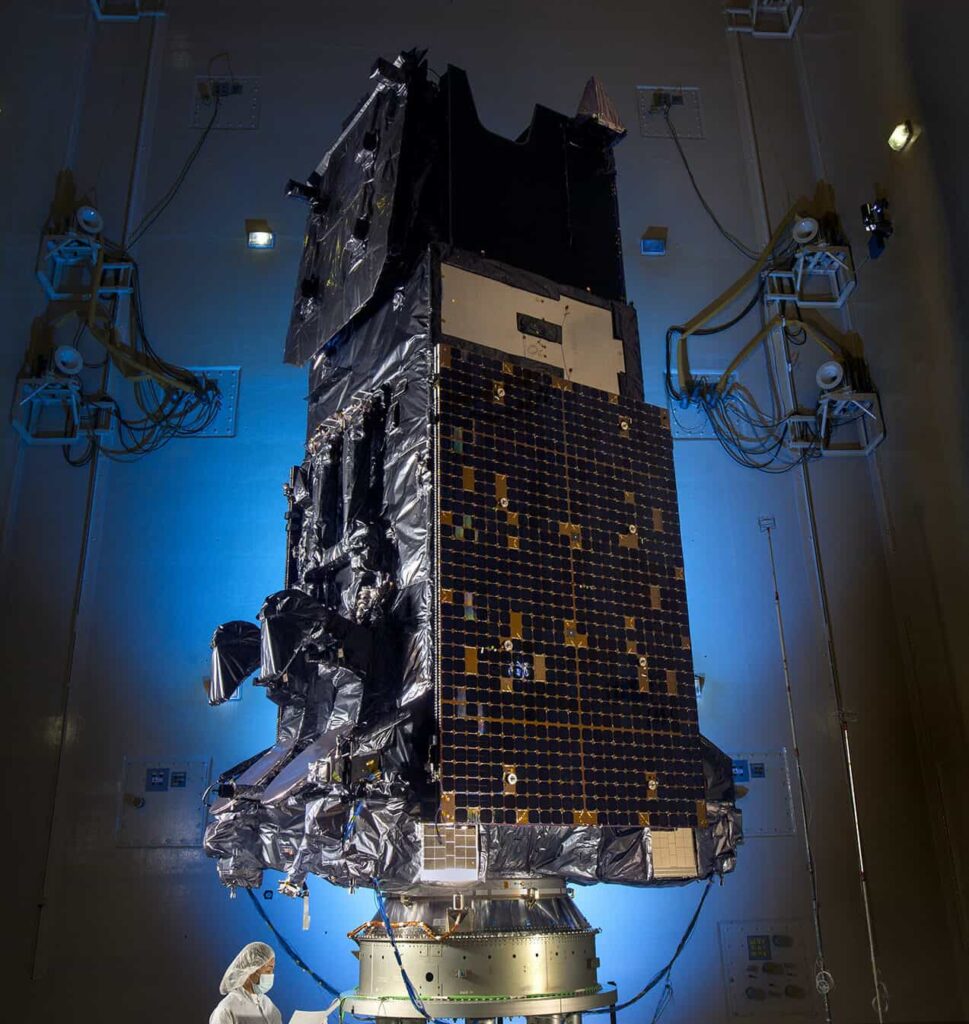
The U.S. Space Force has determined the fifth Space Based Infrared System Geosynchronous Earth Orbit satellite (SBIRS GEO-5) from Lockheed Martin, is complete and ready for launch in 2021.
Built in a record time and at no additional cost to the government for the upgrade, SBIRS GEO-5 is the first military space satellite built on the company’s modernized, modular LM 2100™ combat bus. SBIRS GEO-6, launching in 2022, is also being built on the new bus designed for speed and resilience.
“SBIRS’ role as an ever-present, on-orbit guardian against global ballistic missile threats has never been more critical,” said Tom McCormick, Lockheed Martin’s vice president for Overhead Persistent Infrared (OPIR) Systems. “In 2019 alone, SBIRS detected nearly one thousand missile launches, which is about a two-fold increase in two years.”
“Completing the production of a complex missile-warning satellite during the challenging COVID environment is a huge accomplishment and is a testament to Lockheed Martin’s professionalism and dedication to the security of our Nation,” said Capt. Alec Cook, Space and Missile Systems Center’s SBIRS GEO-5/6 Assembly, Test, and Launch Operations lead.
Both SBIRS GEO-5 and GEO-6 are expected to join the U.S. Space Force’s constellation of missile warning satellites, equipped with powerful scanning and staring infrared surveillance sensors, which protect our nation 24-7. These sensors collect data that allow the U.S. military to detect missile launches, support ballistic missile defense, expand technical intelligence gathering and bolster situational awareness on the battlefield.
The LM 2100 bus is the result of a Lockheed Martin internally-funded, multi-year modernization initiative. It is designed to provide greater resiliency and cyber-hardening; enhanced spacecraft power, propulsion and electronics; common components and procedures to streamline manufacturing; and a flexible design that reduces the cost to incorporate future, modernized sensor suites.
SBIRS GEO-5 was officially completed on Oct. 29, 2020.












